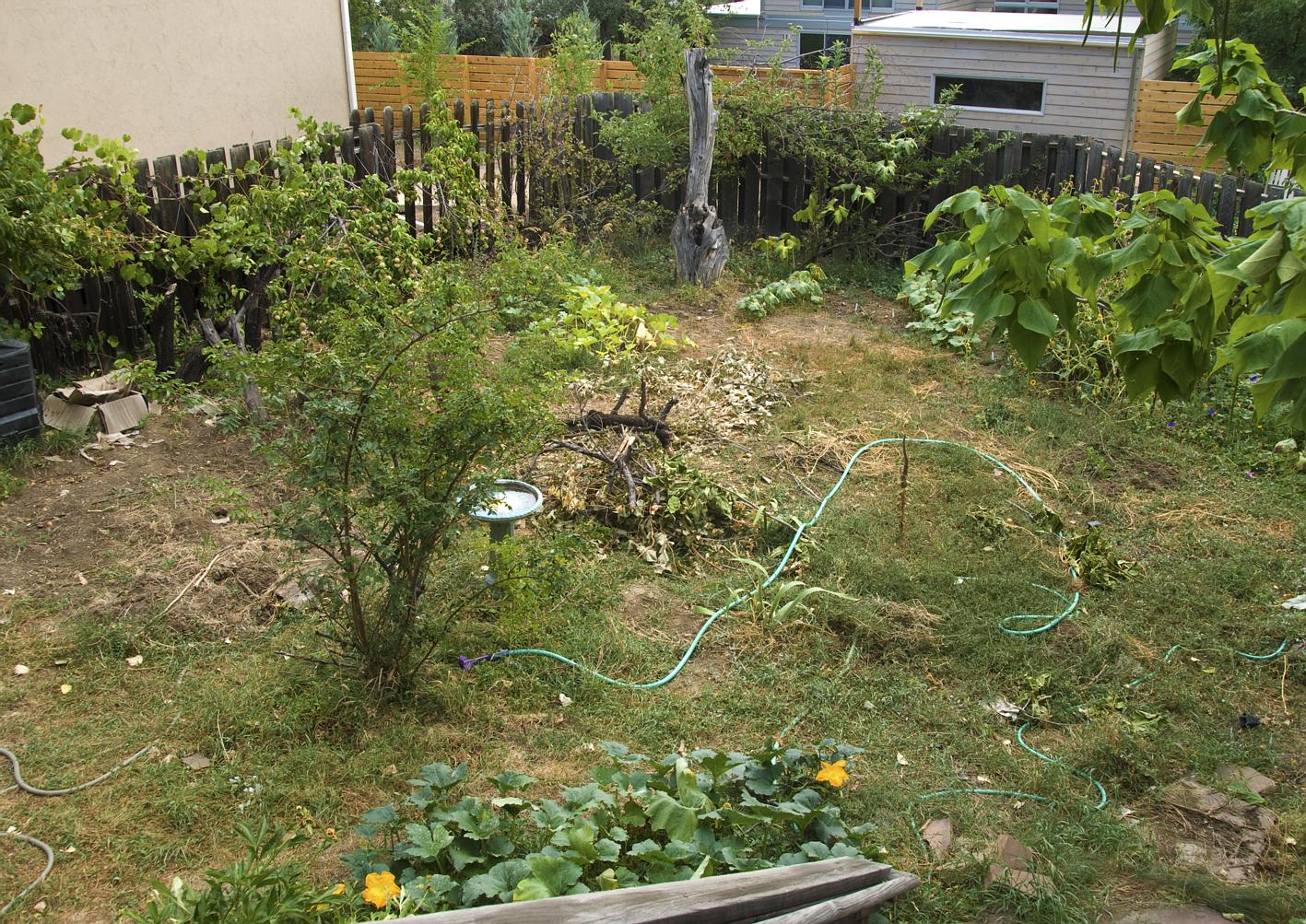


|
Commenced:
|
01/08/2012 |
|---|---|
|
Submitted:
|
18/12/2012 |
|
Last updated:
|
02/01/2019 |
|
Location:
|
2912 6th St, Boulder, Colorado, US |
|
Phone:
|
303-449-7219 |
|
Website:
|
http://cantelow.com |
|
Climate zone:
|
Cold Temperate |
(projects i'm involved in)
Back to Ann Cantelow's Home
Project: Ann Cantelow's Home
Posted by Ann Cantelow about 12 years ago
Greetings!
First, a history of my little place. This is a suburban home on 1/20 hectare - 1/8 acre - where I've lived since the late '80s. I started being the household garden person in 1990 or so.
The place started out being almost all lawn. I've slowly removed maybe 1/5 of that to replace with flowers, roses, honeysuckle, and later, some native plants- penstamon, fernbush, silver buffaloberry, fun cactuses.
In 2012, I started out on a quest to improve my soil. It could be worse, been leaving lawn clippings in place. It's not loose and free like I've seen in wild areas, but there are earthworms. Google searches on improving soil brought me to hugelculture first somehow, then permaculture in general. I started burying some extra wood refuse, though not yet in a well-planned place.
A mistake made: Our house gets a daily newspaper, and I hated to see the waste of not using it somehow. I hatched an idea of burying torn paper in patches around the lawn. Sometimes it was too thick, making progress slow to start growing things on it. And all that digging is hard on the knees. All this is unnecessary, as I was doing it.
Good lesson learned- I saw how plants put there at the right time can outcompete bermuda grass, if you just weed the area a little at the beginning to give the other plants a start. Bermuda grass is 98% gone in some places!
I planted some squashes and pumpkins, was pleased with their exuberant growth. In November, I started a swale. It will be short, 10 meters long or less, but it's fun to think about and explore.
There are not enough beneficial plants; that's urgently needed. I've planted the leguminous hairy vetch in any bare spots I had and on the swale, and hope to go all-out with legumes and mulch plants next year, including legume trees and bushes. I should maybe also round up other mulch materials from elsewhere, might get to that a little late.
September view of the back area-
You must be logged in to comment.
Note: The various badges displayed in people profiles are largely honesty-based self-proclamations by the individuals themselves. There are reporting functions users can use if they know of blatant misrepresentation (for both people and projects). Legitimacy, competency and reputation for all people and projects can be evidenced and/or developed through their providing regular updates on permaculture work they’re involved in, before/after photographs, etc. A spirit of objective nurturing of both people and projects through knowledge/encouragement/inspiration/resource sharing is the aim of the Worldwide Permaculture Network.
 |
MemberA member is a permaculturist who has never taken a PDC course. These cannot become PDC teachers. Members may be novice or highly experienced permaculturists or anywhere in between. Watch their updates for evaluation. |
|---|---|
  |
Permaculture MatchmakerOne of these badges will show if you select your gender and the "I'm single, looking for a permaculture partner" option in your profile. |
 |
PDCPeople who claim to have taken a Permaculture Design Certificate (PDC) course somewhere in the world. |
 |
PDC VerifiedPeople who have entered an email address for the teacher of their PDC course, and have had their PDC status verified by that teacher. Watch their updates for evaluation. |
 |
PRI PDCPeople who’ve taken a Permaculture Research Institute PDC somewhere in the world. |
 |
PDC TeacherPeople who claim to teach some version of PDC somewhere in the world. |
 |
PRI TeacherWith the exception of the ‘Member’ who has never taken a PDC, all of the above can apply to become a PRI PDC Teacher. PRI PDC Teachers are those who the PRI recognise, through a vetting board, as determined and competent to teach the full 72-hour course as developed by Permaculture founder Bill Mollison – covering all the topics of The Designers’ Manual as well as possible (i.e. not cherry picking only aspects the teacher feels most interested or competent in). Such teachers also commit to focussing on the design science, and not including subjective spiritual/metaphysical elements. The reason these items are not included in the PDC curriculum is because they are “belief” based. Permaculture Design education concerns itself with teaching good design based on strategies and techniques which are scientifically provable. PRI PDC Teachers may be given teaching and/or consultancy offerings as they become available as the network grows. |
 |
Aid WorkerThe individual with this badge is indicating they are, have, or would like to be involved in permaculture aid work. As such, the individual may or may not have permaculture aid worker experience. Watch their updates for evaluation. |
 |
ConsultantThe individual with this badge is indicating they are, have, or would like to do paid permaculture design consultancy work. As such, the individual may or may not have permaculture consultancy experience. Watch their updates for evaluation. |
 |
Community ProjectCommunity projects are projects that help develop sustainable community interaction and increase localised resiliency. |